Why you should walk Naples is easy to say. The city has a history spanning thousands of years, which has left important traces everywhere, from the times of ancient Greece, twenty-five centuries ago, to present days, with contemporary art and street art. A walk in the city is a real dive into history that will allow you to come across, in the space of just a few minutes, fascinating archaeological ruins, magnificent medieval castles, sumptuous baroque churches, and elegant palaces of the Bourbon aristocracy.
While walking around the city, you can also stop to admire breathtaking views, breathing in the scent of the sea, and get to know the effervescent local culture, with its liveliness, its music and even its food. A complete experience, therefore, that will allow you to experience first-hand the uniqueness of a city that managed to stay authentic
What are the most popular tour themes in Naples

Naples is a city of a thousand colors, as the verses of one of its most famous songs say, so even when it comes to discovering the best walking tours of Naples, there really is something for everyone.
Among the most popular and appreciated, however, are the archaeological tours thanks to which you can learn about the most remote past of the city through a series of works and finds perfectly integrated into the urban fabric.
The tours of underground Naples are equally fascinating because they offer the opportunity to get to know another side of the city, one that is not immediately obvious but is nevertheless rich in history, charm and mystery. And speaking of mysteries, the tour of esoteric Naples is unmissable. The city has always lived suspended between the sacred and the profane, between religion and paganism and even today many legends are an important part of the local culture.
Leaving Naples without having tasted at least some of its countless culinary delights is impossible. Not only pizza, then. A street-food tour is a great way to start learning about the vast world of Neapolitan cuisine.
Naples' arecheological tours
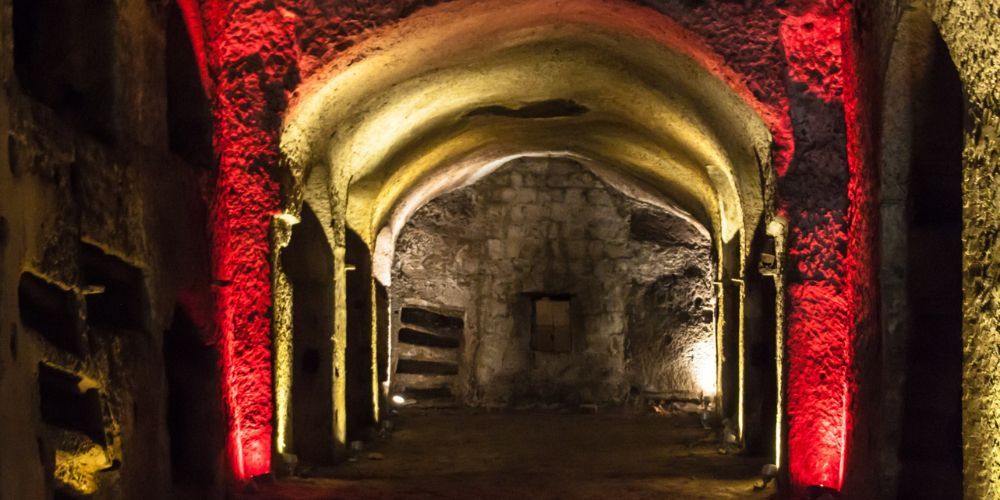
Many visitors come to Naples to visit Pompeii and Herculaneum, but as beautiful and important as these sites are, archaeology enthusiasts will also love taking a walking tour of Naples to discover its most ancient wonders.
A great starting point is Piazza Bellini, right in the historic center and not far from the Dante Metro stop. Here, among the trendy bars loved by students, there are the remains of the Greek walls from the 4th century BC.
From here, walking along the decumani, the streets designed by the first Greek colonists almost two thousand five hundred years ago, you reach Piazza San Gaetano, where the Roman forum once stood. Two of the largest churches in this area, San Lorenzo and San Paolo Maggiore, are also built on the remains of ancient temples and several traces of this long past are still visible.
Less than five minutes away, from Via dell'Anticaglia you can reach the remains of the Roman theater that offer a surprising spectacle. The structure of the theater is in fact literally set between the modern buildings but still perfectly visible.
A walk of about a quarter of an hour through the
alleys of the center will allow you to reach the
MANN, the national archaeological museum. It is considered one of the most important in the world, thanks to its collections of Egyptian, Greek and Roman finds and also to a surprising section of
frescoes and mosaics taken from the archaeological sites of Pompeii and Herculaneum.
A truly interesting alternative is the archaeological park of Posillipo. With a detour of a few kilometers from the center you can reach a less visited, but still extraordinary site. On the Posillipo hill, romantic and panoramic, there are important finds such as the Greek Odeon theater, the imperial villa, and the splendid submerged park of Gaiola.
Last but not least, the tunnel of almost eight hundred meters, known as the cave of Seiano, is a passage that dates back to the 1st century AD, incredibly suggestive. The entrance is located in Coroglio, on the opposite side of the Posillipo hill. The tunnel crosses it entirely and reaches the Gaiola park.
The most fascinating historical tours of Naples
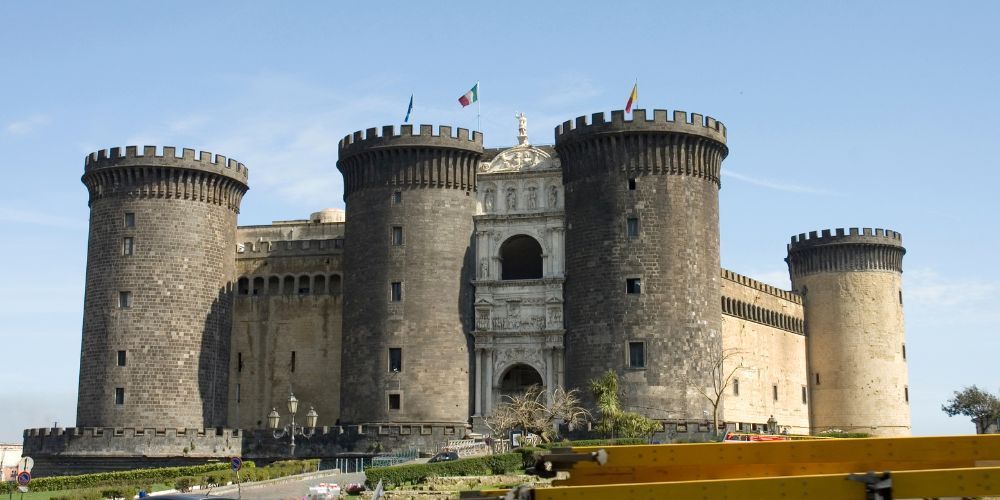
Have you ever felt the thrill of walking through the centuries? In Naples it is very easy. A walk in the center can easily take you from the Middle Ages to the 19th century, or you can choose from many options for themed walking tours.
If you are fascinated by castles, for example, you cannot miss Castel dell'Ovo, the fortress on the sea. The location alone is a real spectacle and the castle also holds a famous legend. In its foundations the Latin poet Virgil hid an egg, and as long as it remains intact, the city will continue to live and prosper. From here, walking along the seafront, you can reach Castel Nuovo, also known as Maschio Angioino, the beautiful medieval castle built by the Angevin kings. After admiring its massive and imposing mass, with a cable car ride you can reach the Vomero hill to visit another fortress, Castel Sant'Elmo, with its spectacular panorama.
Baroque Naples also offers an infinite number of artistic jewels, almost all in the historic center within walking distance of each other. The Church of Gesù Nuovo, in Piazza del Gesù, is a splendid example of Neapolitan Baroque and is just a few steps from the Cappella Sansevero, one of the absolute peaks of Neapolitan Baroque that fascinates visitors especially thanks to the famous Veiled Christ. The chapel is also a short distance from two important churches, San Domenico Maggiore and San Gregorio Armeno. Both are noted for their austere exteriors of medieval origin and the splendor of the gold and frescoes in the interiors.
A walking tour through more recent history, however, will let you discover the wonders of the 18th and 19th centuries. Don't miss the Teatro San Carlo in Piazza del Plebiscito, and the Galleria Umberto I located right in front, with its typically 19th-century iron and glass dome. Behind the theater, the Royal Palace outlines one side of the most famous square in Naples, while on the opposite side there is the Caffè Gambrinus. It is an excellent opportunity for a break among mirrors and stuccos, in the splendor of one of the most elegant historic cafes in the city, where intellectuals often met.
Markets and street-food tour of Naples

After walking so much, there is nothing better than sitting down to enjoy a typical Neapolitan pizza, or a disch of pasta and potatoes. And what about a very sweet babà, the star of the local pastry shop? Of course, a good meal must end with a cup of typical Neapolitan espresso coffee, which you can also consume at the counter of any bar, like a true local.
Those who still want to walk can still enjoy these and many other specialties in street-food version. The
cuoppo, for example, is the star of every
street food in Naples. The practical paper cone to fill with fried fish and many other delicacies, such as small mozzarella, mini pizzas and fried polenta, is convenient and practical to carry around, made specifically to satisfy your hunger while you visit all the beauties of the city.
Hunting for specialties is also a good excuse to visit the colorful and lively local markets. One above all is the Pignasecca market, in the center. It is among the oldest and richest in folklore, where you can easily pass from the fresh fish stalls to those selling clothes or accessories.
The underground Naples tours
Visiting Naples underground is a unique experience. There is an entire world beneath the city, which, just like the city itself, has passed through the ages. There are the hypogea of churches, archaeological finds and tunnels where citizens took refuge during the war.
One of the "epicenters" of this unknown world is located in Piazza San Gaetano. From here you can go down to Greek cisterns that were later converted into air raid shelters during the war. The tunnels dug into the tuff, however, hide Roman aqueducts, wells and basins.
Another fascinating route is located in the elegant
Chiaia district. Here, a
tunnel was dug in the
Bourbon era that crossed an aqueduct and the result is an ingenious work of engineering and hydraulics that today has become a series of underground routes of varying complexity, but all of enormous beauty. Some points are also
navigable.
A tour of the underground of Naples, however, would not be complete without the catacombs, the ancient cemeteries; there are several in the city, and two of the most famous are also very close to each other. Those of San Gaudioso in the Sanità district, in fact, are connected to those of San Gennaro on the Capodimonte hill by a stretch of road of about a kilometer.
The walking tours to know the street art of Naples
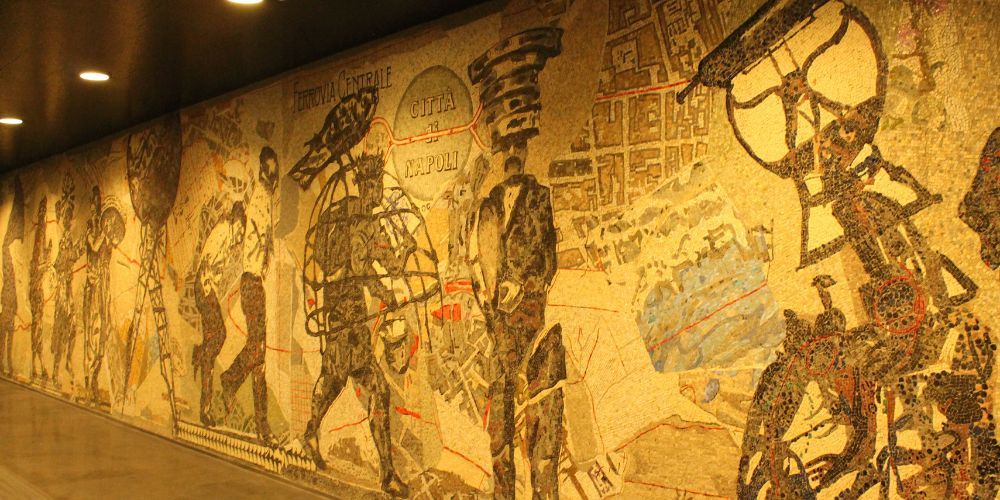
From simple graffiti to murals as big as buildings, street art has been coloring Naples for several years now and the city has a rich heritage of works that are halfway between popular expression and the will of the institutions to redevelop the most degraded areas. In any case, a walking tour of the street art of Naples is a great opportunity to get to know all the deities of the Neapolitan pantheon. From Totò to San Gennaro, passing of course through Maradona.
A walk in the Rione Sanità, for example, will introduce you to the faces of the great protagonists of Neapolitan culture such as Eduardo De Filippo and Massimo Troisi, but also many other works that have ordinary people and scenes of everyday life as protagonists. The neighborhood, until a few years ago prey to degradation, has recently been literally reborn also thanks to local and international street artists.
Even among the alleys of the Quartieri Spagnoli the murals are now countless. The protagonists of these works are famous people like Amy Winehouse or Frida Khalo, but also Rita Levi Montalcini or Basquiat, but the most viewed work of all is the enormous Maradona of via Emanuele De Deo, a work by the young local artist Mario Filardi. If you pass by here, also remember to admire a lesser-known but brilliant work of street art, the goddess Isis hidden by an unusual painting technique, which can only be seen by applying a negative filter to the camera.
With a walk along via dei Tribunali you can come across forty works that represent icons of cinema and art in an underwater version complete with snorkel, all part of a single project by the street artist Bubu. In the immediate vicinity, in piazza Gerolomini, there is the only Italian work by Banksy, the famous Madonna With The Gun.
Walking further to Forcella, you will easily find the sweet face of a young San Gennaro, a work by Jorit, author of many other enormous murals, especially in the suburbs.
A walk in mystery: the esoteric Naples

Lovers of mystery will feel at home in Naples. Here, popular fantasy, folklore, superstition and religion have always coexisted, creating not only stories to tell, but also places to visit.
One of the major protagonists of Neapolitan culture in the 18th century, Prince Raimondo de Sangro, who gave the city the beautiful Sansevero Chapel, was also known as an alchemist and the traces of this activity are the anatomical machines. The two statues are linked to a macabre legend according to which the prince would have experimented on two of his servants until they died. These two statues are still visible and are in fact among the main attractions of the chapel.
The beautiful monastery of Santa Chiara is said to be inhabited by the restless ghost of Queen Giovanna d’Angiò, murdered and buried in a common grave because she had previously been excommunicated.
The bond of the Neapolitan people with the afterlife has always been very strong and even now it materializes in the cult of the anime pezzentelle, the wandering souls of Purgatory who grant favors to those who pray for them. The beautiful baroque church of Santa Maria del Purgatorio ad Arco, but in particular its hypogeum, is one of the centers of this cult. Here you can find Lucia's skull, decorated with flowers and a bridal veil by girls who ask her for help in finding love.
This Neapolitan custom of adopting skulls is even more visible in the enormous ossuary of the Cimitero delle Fontanelle, in the Sanità district. Here it will not be difficult for you to see skulls arranged in small altars, cleaned and decorated by those who implore them for some grace.
A tour of esoteric Naples must necessarily also pass through the church of Santa Maria la Nova which, in addition to being one of the most beautiful in the city, according to legend houses the tomb of Count Dracula, complete with the dragon banner, symbol of the count's family. According to the stories, the count, sick and wounded after a long imprisonment, was brought to Naples by an illegitimate daughter, where he later died.
What are the best neighborhoods for walking in Naples

Walking in Naples means seeing an endless number of things and having the possibility of organizing many themed tours, so what are the best neighborhoods for a walk?
It depends on what you are looking for.
The alleys of the historic center lead you to some of the major monuments in the city, but also suggestive corners yet to be discovered, hidden gems and shops where you can buy the most authentic handicrafts. In general, they are a real full immersion in Neapolitan culture.
The Caracciolo seafront, on the other hand, is unmissable if you want to admire the most beautiful view of the city on the blue sea shore, with Vesuvius as a backdrop. Here you are also in the immediate vicinity of the Chiaia neighborhood, with its elegant shops, restaurants and many options for your evenings too.
A walk in the hills, on the other hand, will let you know the lively Vomero neighborhood, always full of life until late at night thanks to an endless number of bars, restaurants, pubs and so on. It is the shopping district, but from the top you can also admire wonderful views and if it is hot and you are looking for some shade, here there is also the beautiful garden of the Villa Floridiana.
Posillipo hill is also definitely worth a visit. It is a quiet neighborhood with unparalleled views. From the top of the hill you can enjoy an unforgettable view of the entire gulf and moving sunsets, but you can also go down to the sea. In the summer you can reach the small village of Marechiaro with its small rocky coves, for a dip in crystal water.
Guided or self-guided tours: tips to explore Naples

Exploring Naples or any other place independently gives you the advantage of doing everything at your own pace and discovering the beauty of improvisation. With the common sense that is used to visit large cities, walking in Naples is absolutely safe and especially in the historic center the various attractions are well signposted.
A guided tour of Naples, however, can save you time and energy to dedicate perhaps to other activities and can enrich your visit with fascinating stories, interesting news and useful advice.
In any case, some advice is always valid. One above all: wear comfortable shoes. Distances can be bigger than you think, and much of the historic center is paved with stone cobblestones that, especially in case of rain, can be slippery.
From June to September in the city it can be very hot, so it is better to wear cool clothes and a hat, especially in places very exposed to the sun such as Piazza del Plebiscito, Piazza Municipio or the sea front.
Be careful with bags and backpacks, keep your eyes open on public transport and in very crowded places.
The historic center is a grid of very narrow streets, where it could happen that the geolocation of your phone is not accurate. You certainly won't have problems in finding what you are looking for, and the locals are always happy to help visitors who ask for information, but as an additional precaution it can be convenient to have an offline map.












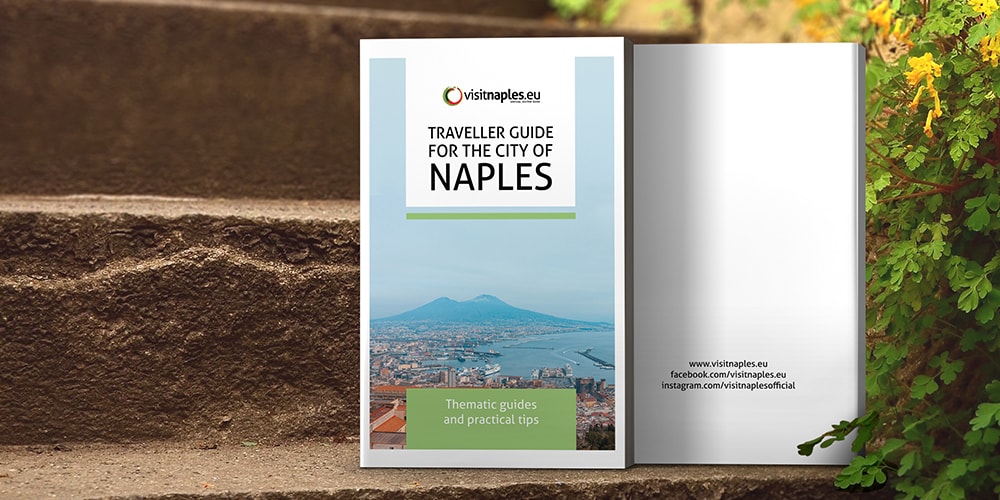


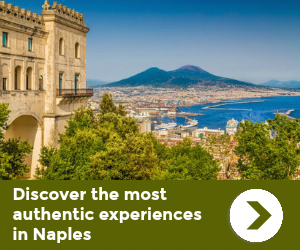


Lascia un commento